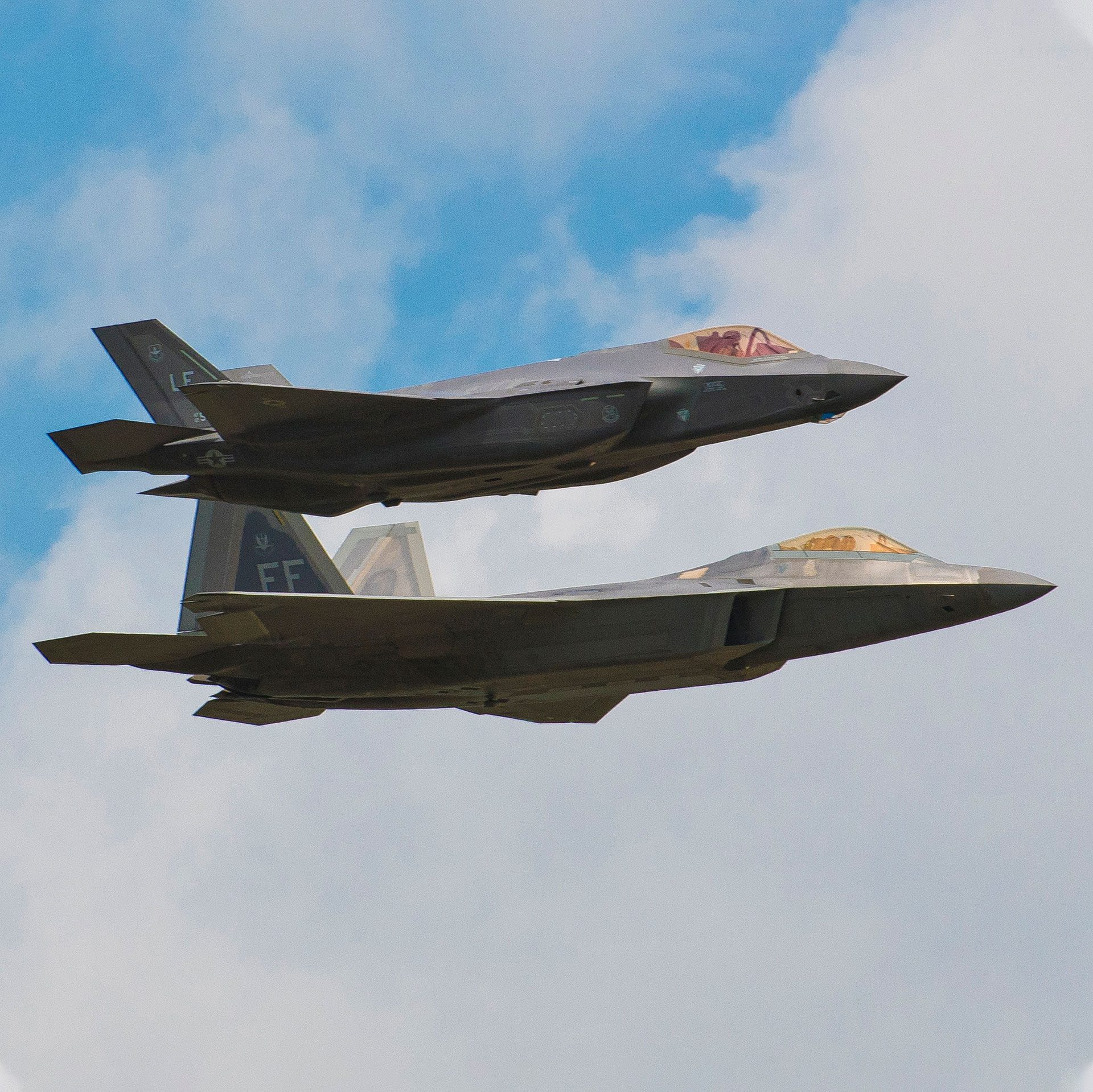There have been only a handful of aircraft that featured designs that later proved to be timeless, adapting to ever-changing missions.
For almost 25 years, the F-22 has done that – proving its enduring design and capability with the value it brings to the fight, time and again. Its cutting-edge, advanced 5th generation capabilities bring unmatched air dominance today, and it will play a role in the future of air power for years to come.
#SquadGoals, Air Power is Not a Solo Sport
The F-22’s connectivity with other platforms in support of the Air Force’s Joint All-Domain Operations strategy is revolutionizing modern day air power. When it comes to open systems architecture and digital engineering, there is no better example than the F-22.
Unprecedented exchanges of battlefield information allow for lessons learned on the F-22 to be relayed to the F-35, while advances from the F-35 can be retrofitted into the Raptor fleet. Both aircraft working in tandem provide an advantage that dominates the battlespace.
We are also making investments in in digital transformation and AI that focus on the development of foundational technologies supporting the increased speed of decision making at all levels within our systems.

Recently, Lockheed Martin Skunk Works®, the Missile Defense Agency and the U.S. Air Force successfully linked a U-2, five F-35s and an F-22 in air and provided real-time 5th generation data to operators on the ground, introducing greater mission flexibility across domains and an enhanced total operational picture for the joint warfighter.
The battlespace is not defined by one aircraft, it’s defined as a synchronized team. Together, the F-22, F-35 and the F-16 fly together to form a backbone of the U.S. Air Force fighter fleet. All are proven, innovative platforms with complementary capabilities that support the fight today and conflicts we may face in the future.
Proof Point: Digital Transformation
Raptor Agile Capability Release (RACR) Release 1 was the first attempt by the Department of Defense and industry to implement agile commercial software practices at scale on a fighter platform. This involved taking on a new hardware architecture for the F-22 to implement open systems architecture (OSA). It was the largest hardware upgrade on the platform in more than a decade.
Today, the F-22 is already flying OSA, and this release gets us that much closure to the program’s significant Release 1 operational fielding decision milestone later this year. These types of development milestones on the Raptor demonstrate how digital transformation is coming to fruition across the fleet.




